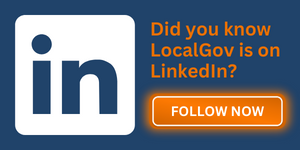
Nick Wiggin, head of partnerships at connectivity infrastructure-as-a-service provider Freshwave, looks at the relationship between connectivity and community, and discusses the importance of digital champions.
Summertime at one of the UK’s most popular beach resorts conjures up images of donkey rides, exploring the pier and ending the day with a portion of delicious fish and chips.
But over two distinctly drizzly days in July, many of Bournemouth’s visitors were focused on public sector reform rather than watching Punch and Judy perform, as the town was playing host to the Local Government Association (LGA) Annual Conference. High on the agenda was the critical role that local authorities play in enhancing mobile connectivity – and how industry can work with them.
The power of connection
Strong mobile connectivity across every part of the UK is critical to ensure that all citizens can benefit from the social and economic benefits it brings, whether that’s attracting inward investment to an area or helping local businesses to thrive.
Across the vast majority of Britain, the mobile network operators (MNOs – being EE, Virgin Media O2, Three and Vodafone) provide excellent mobile connectivity. But different environments can come with different challenges, such as tall buildings in an urban landscape blocking signal or the sheer volume of people in or near a stadium all wanting to use their mobiles at the same time.
In these situations, it’s beneficial for local government to work closely with a ‘neutral host’ provider: a company that works with all the MNOs and specialises in enhancing mobile connectivity in areas where it might otherwise be poor.
A recipe for collaboration
The relationship between local government and neutral host providers can be thought of like the perennial seaside favourite ‘99’ ice cream – all the elements work well by themselves, but when Mr Whippy combines with Cadbury’s Flake you get something truly delicious (or, in our case, truly connected).
Neutral host providers already have the technology to enhance connectivity but by working together with local authorities the benefit for communities is maximised. Local authorities have an important role to play as they control access to council-owned street furniture, such as lampposts. This street furniture can be used by the MNOs to host outdoor small cells, which are a fantastic way to boost mobile coverage in an area with high demand.
And they can now work with all the MNOs thanks to the development of the open access model. This is a non-exclusive approach which makes it easier for the MNOs to access, deploy on and share council-owned street furniture for their digital infrastructure.
Local authorities are asked to do a lot with limited resources, but there’s been a lot of work done by agencies to provide standardised resources to help. Standard contracts and agreements can be found on the Government’s Digital Connectivity Portal, meaning councils don’t have to start from scratch.
And the UK Government’s Wireless Infrastructure Strategy (WIS), released earlier this year, recognises the acute need for collaboration, and supports councils to create strong and mutually beneficial relationships with neutral host providers.
Digital champions are key
One way of securing this collaboration, as endorsed in the WIS, is through appointing digital champions. Returning once more to the ‘99’ metaphor, digital champions can be considered the ‘ice cream vendor’ in our seaside scene: the people who use their expertise to bring the ingredients (or, in our case, disparate organisations with mutual connectivity interests) together.
The role of a digital champion is broad. On a macro level, they lead the implementation and development of their local authority Digital Infrastructure Strategy. On a micro level, they work closely with MNOs to highlight the benefits of connectivity to local citizens, while minimising barriers – for example, by using standardised contracts to increase the speed of roll outs and bringing different departments in the council together to cooperate.
Research from trade industry body Mobile UK has shown that having at least one individual in each local authority who understands the need for digital connectivity and can get mobile connectivity projects up and running is vital. In fact, local government organisations who have a digital champion are four times more likely to have an effective relationship with digital infrastructure providers.
Benefits for all communities
The work of digital champions isn’t just limited to big cities like Glasgow or London: in fact, more rural areas may benefit from improved coverage even more so. Staffordshire County Council noted that improved coverage reduced isolation and gave residents better access to job opportunities and education services, while Cumbria County Council has reported increased economic growth across the county, thanks to higher levels of connectivity.
The UK Government has bold goals for the development of 5G and mobile connectivity. This ambition was absolutely matched during my time in Bournemouth: local authorities know that increased connectivity means increased community and are looking to partner with the right organisations to make this work a reality. A busy and thought-provoking couple of days – with just enough time for that portion of fish and chips!













